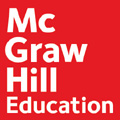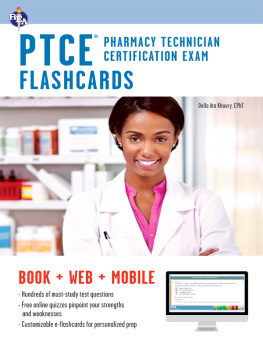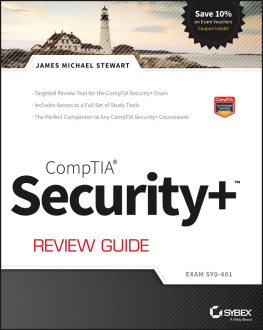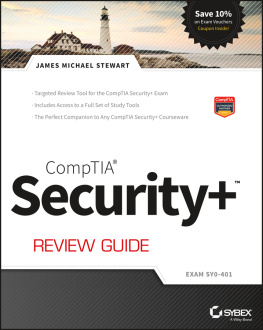
Notice Medicine is an ever-changing science. As new research and clinical experience broaden our knowledge, changes in treatment and drug therapy are required. The authors and the publisher of this work have checked with sources believed to be reliable in their efforts to provide information that is complete and generally in accord with the standards accepted at the time of publication. However, in view of the possibility of human error or changes in medical sciences, neither the authors nor the publisher nor any other party who has been involved in the preparation or publication of this work warrants that the information contained herein is in every respect accurate or complete, and they disclaim all responsibility for any errors or omissions or for the results obtained from use of the information contained in this work. Readers are encouraged to confirm the information contained herein with other sources. For example and in particular, readers are advised to check the product information sheet included in the package of each drug they plan to administer to be certain that the information contained in this work is accurate and that changes have not been made in the recommended dose or in the contraindications for administration.
This recommendation is of particular importance in connection with new or infrequently used drugs.  Copyright 2013 by McGraw-Hill Education. All rights reserved. Except as permitted under the United States Copyright Act of 1976, no part of this publication may be reproduced or distributed in any form or by any means, or stored in a database or retrieval system, without the prior written permission of the publisher. ISBN: 978-0-07-180998-6
Copyright 2013 by McGraw-Hill Education. All rights reserved. Except as permitted under the United States Copyright Act of 1976, no part of this publication may be reproduced or distributed in any form or by any means, or stored in a database or retrieval system, without the prior written permission of the publisher. ISBN: 978-0-07-180998-6
MHID: 0-07-180998-8 The material in this eBook also appears in the print version of this title: ISBN: 978-0-07-179412-1, MHID: 0-07-179412-3. All trademarks are trademarks of their respective owners.
Rather than put a trademark symbol after every occurrence of a trademarked name, we use names in an editorial fashion only, and to the benefit of the trademark owner, with no intention of infringement of the trademark. Where such designations appear in this book, they have been printed with initial caps. McGraw-Hill eBooks are available at special quantity discounts to use as premiums and sales promotions, or for use in corporate training programs. To contact a representative please e-mail us at bulksales@mcgraw-hill.com. TERMS OF USE This is a copyrighted work and McGraw-Hill Education and its licensors reserve all rights in and to the work. Use of this work is subject to these terms.
Except as permitted under the Copyright Act of 1976 and the right to store and retrieve one copy of the work, you may not decompile, disassemble, reverse engineer, reproduce, modify, create derivative works based upon, transmit, distribute, disseminate, sell, publish or sublicense the work or any part of it without McGraw-Hill Educations prior consent. You may use the work for your own noncommercial and personal use; any other use of the work is strictly prohibited. Your right to use the work may be terminated if you fail to comply with these terms. THE WORK IS PROVIDED AS IS. McGRAW-HILL EDUCATION AND ITS LICENSORS MAKE NO GUARANTEES OR WARRANTIES AS TO THE ACCURACY, ADEQUACY OR COMPLETENESS OF OR RESULTS TO BE OBTAINED FROM USING THE WORK, INCLUDING ANY INFORMATION THAT CAN BE ACCESSED THROUGH THE WORK VIA HYPERLINK OR OTHERWISE, AND EXPRESSLY DISCLAIM ANY WARRANTY, EXPRESS OR IMPLIED, INCLUDING BUT NOT LIMITED TO IMPLIED WARRANTIES OF MERCHANTABILITY OR FITNESS FOR A PARTICULAR PURPOSE. McGraw-Hill Education and its licensors do not warrant or guarantee that the functions contained in the work will meet your requirements or that its operation will be uninterrupted or error free.
Neither McGraw-Hill Education nor its licensors shall be liable to you or anyone else for any inaccuracy, error or omission, regardless of cause, in the work or for any damages resulting therefrom. McGraw-Hill Education has no responsibility for the content of any information accessed through the work. Under no circumstances shall McGraw-Hill Education and/or its licensors be liable for any indirect, incidental, special, punitive, consequential or similar damages that result from the use of or inability to use the work, even if any of them has been advised of the possibility of such damages. This limitation of liability shall apply to any claim or cause whatsoever whether such claim or cause arises in contract, tort or otherwise.
Contents
Section 12: Special Patient PopulationsPreface and How to Use These Cards
Using flashcards is a very effective strategy for studying. Flashcards are two-sided study aids that have a cue, a question, a concept on one side, and the answer on the other or opposite side.
Read all of the flashcards and divide them into three groups or categories. Group 1 should be the cards with questions that you are confident in your knowledge to answer. Group 2 should be cards with questions to which you know some or part of the answers. Group 3 should be the cards with questions to which you do not know the answers at all. Start with the group 3 cards, focusing on understanding why the answer is what it is and refer to your class notes and textbooks. Once you become confident in answering these cards, move them over to the group 2 pile.
Once all of your group 3 cards have been moved over to your group 2 pile, begin working on your group 2 pile. Once you become confident in answering these cards, move them over to the group 1 pile. Once all of your group 2 cards have been moved over to your group 1 pile, begin working on your group 1 pile. Focus on filling the gaps in your knowledge when using these study cards. Remember to allot time for studying, and get plenty of rest before an examination. Peter A. Peter A.
DiPrima, Jr., EMT-Paramedic/CICScott S. Coyne, MD p.diprima@hotmail.com docscott@optonline.net
Acknowledgments
I dedicate these Medical Flashcards to my father. Dad, you showed me right from wrong and how hard work pays off.
PADSection 1: Preparatory
EMS Systems
List 4 attributes of a health care professional.
Attributes of a professional paramedic include: 1. Integrity 2.
Empathy 3. Self-motivation 4. Appearance and personal hygiene ____ ____ is one of the most urgent health care challenges. Patient safety is one of the most urgent health care challenges. Statistic Incidence per IOM report To Err Is Human: Up to 98 000 patients die due to medical errors.
Workforce Safety and Wellness
Standard safety precautions for the paramedic include: Hand-washing Adherence to standard precautions/OSHA regulations Safe operation of EMS/patient care equipment Environmental control Occupational health and blood-borne pathogens What are the 5 stages of grief? 1.
Workforce Safety and Wellness
Standard safety precautions for the paramedic include: Hand-washing Adherence to standard precautions/OSHA regulations Safe operation of EMS/patient care equipment Environmental control Occupational health and blood-borne pathogens What are the 5 stages of grief? 1.
Denial (Not me.)Defense mechanism creating a buffer between shock of dying and dealing with the illness/injury. 2. Anger (Why me?)Paramedics may be the target of aggression. 3. Bargaining (OK, but first let me )Agreement that, in the patients mind, will postpone death for a short time. 4.









 Copyright 2013 by McGraw-Hill Education. All rights reserved. Except as permitted under the United States Copyright Act of 1976, no part of this publication may be reproduced or distributed in any form or by any means, or stored in a database or retrieval system, without the prior written permission of the publisher. ISBN: 978-0-07-180998-6
Copyright 2013 by McGraw-Hill Education. All rights reserved. Except as permitted under the United States Copyright Act of 1976, no part of this publication may be reproduced or distributed in any form or by any means, or stored in a database or retrieval system, without the prior written permission of the publisher. ISBN: 978-0-07-180998-6